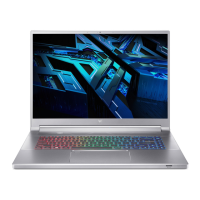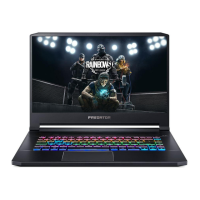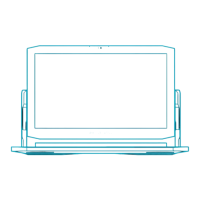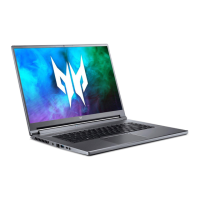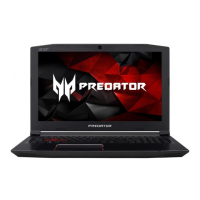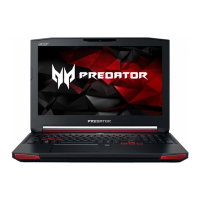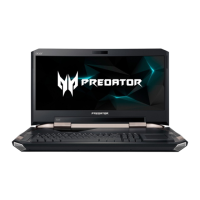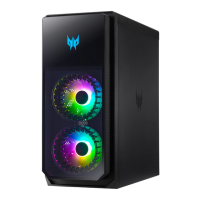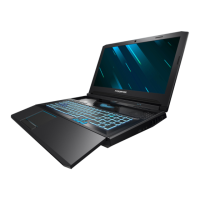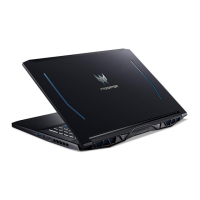Do you have a question about the Acer Predator Triton 300 and is the answer not in the manual?
Information on setup guides, user manual, and downloading updates for your notebook.
Guidelines for turning off, cleaning, and maintaining your computer and AC adapter.
Advice on charging, temperature limits, and proper handling of batteries to ensure longevity.
Identification and description of screen, keyboard, and side views of the notebook.
Details of left, right, rear, and base views including USB, Thunderbolt, HDMI, and audio ports.
Description of USB port types, speeds, and charging capabilities.
Functionality of USB Type-C and Thunderbolt 4 connectors for device and display connections.
Steps to connect external monitors, headphones, and microphones.
How to use keyboard keys, hotkeys, touchpad gestures, and change settings.
Procedures for creating backups and restoring the computer to its original state.
Steps to connect via Bluetooth and the Internet using various network types.
Guide to PredatorSense for system monitoring, fan control, lighting, and app management.
How to enable and configure Bluelight Shield modes to reduce eye strain.
How to use security locks and passwords to protect the computer and data.
How to configure BIOS settings and manage system power for optimal performance.
Information on battery characteristics, charging, optimization, and low-battery warnings.
Tips for traveling, setting up a home office, and using Windows 10 features.
Solutions to common issues, error messages, and frequently asked questions.
How to use various Windows 10 features like Start menu, apps, alarms, and settings.
Advice on protecting your computer from online threats and secure internet usage.
| Form factor | Clamshell |
|---|---|
| Product type | Laptop |
| Product color | Black |
| Housing material | Metal |
| LED backlight | Yes |
| Display diagonal | 15.6 \ |
| Processor cache | 24 MB |
| Processor cores | 8 |
| Processor model | i7-11800H |
| Processor family | Intel® Core™ i7 |
| Processor frequency | 2.4 GHz |
| Processor cache type | Smart Cache |
| Processor manufacturer | Intel |
| Processor boost frequency | 4.6 GHz |
| Internal memory | 16 GB |
| Internal memory type | DDR4-SDRAM |
| Maximum internal memory | - GB |
| SSD capacity | The Solid State Drive's storage capacity in Gigabytes. |
| SSD interface | PCI Express |
| Storage media | SSD |
| Total storage capacity | 512 GB |
| Number of SSDs installed | 2 |
| Discrete graphics card model | NVIDIA GeForce RTX 3050 Ti |
| On-board graphics card model | Intel® UHD Graphics |
| Discrete graphics card memory | 4 GB |
| Discrete graphics memory type | GDDR6 |
| Wi-Fi standards | 802.11a, 802.11b, 802.11g, Wi-Fi 4 (802.11n), Wi-Fi 5 (802.11ac), Wi-Fi 6 (802.11ax) |
| Bluetooth version | 5.1 |
| Top Wi-Fi standard | Wi-Fi 6 (802.11ax) |
| WLAN controller model | Killer Wireless-AX 1650i |
| Ethernet LAN data rates | 10, 100, 1000 Mbit/s |
| USB 2.0 ports quantity | - |
| Pointing device | Touchpad |
| Operating system architecture | 64-bit |
| Battery capacity | - Wh |
| Battery life (max) | 8 h |
| Number of battery cells | 4 |
| AC adapter power | 180 W |
| Depth | 255 mm |
|---|---|
| Width | 353 mm |
| Height | 19.9 mm |
| Weight | 2000 g |
